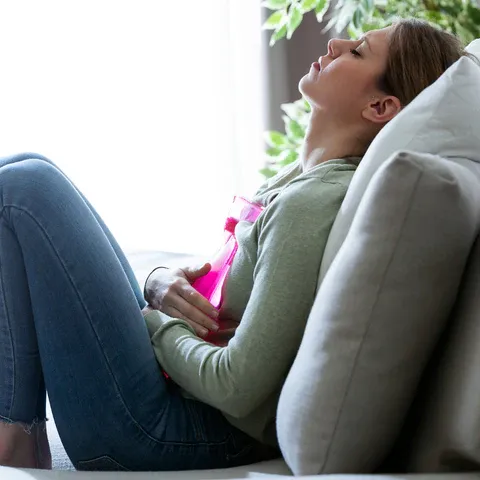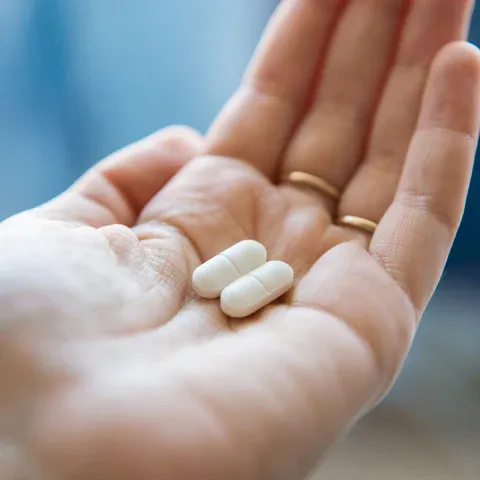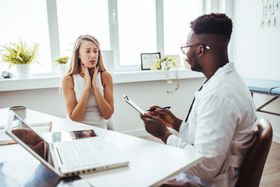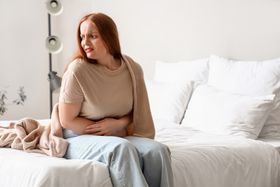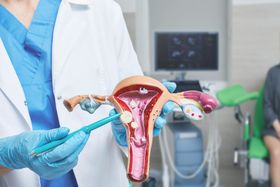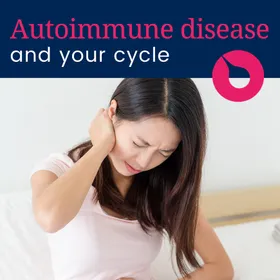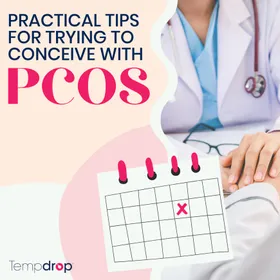Dysmenorrhea - Painful Periods! What’s the Cause & Learn How to Improve Your Symptoms
Published February 5, 2025.
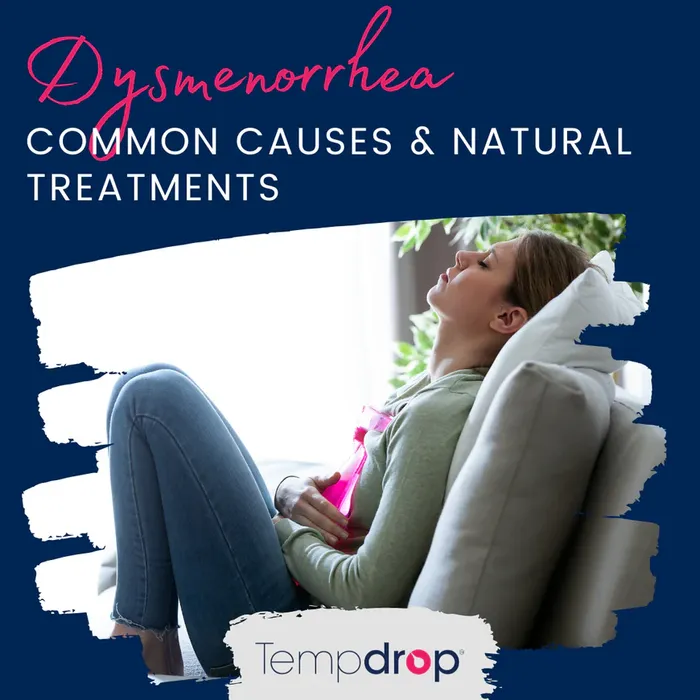
Dysmenorrhea is the medical term for painful periods; it literally translates to “difficult menstruation.” It is estimated that 45% to 95% of women internationally experience painful periods. For 1 in 5 women, this pain is severe enough to interfere with daily activities and a major reason for missing school and work.
Painful periods can range from slightly annoying to severe, debilitating pain. General symptoms include pelvic discomfort and menstrual (period) cramps that can be wave-like or constant. The pain may radiate to the lower back, legs, and/or vulva. For some women painful periods can be accompanied by additional symptoms including backache, headache, dizziness, nausea, vomiting, and/or diarrhea. For some, this is associated with other PMS or PMDD symptoms.
Dysmenorrhea is cyclical and the associated pain begins just prior to the start of a period and persists throughout the period. Discomfort may start 12-24 hours prior to a period and typically continues for the first 48-72 hours of the period. It’s important to note that pain outside of this window is not dysmenorrhea.
Painful periods can be classified as either primary or secondary dysmenorrhea.
Primary dysmenorrhea is pain that is not due to an underlying condition. With primary dysmenorrhea young women typically begin experiencing pain with periods soon after the start of menses and this often improves over time. Secondary dysmenorrhea is painful periods that are associated with underlying medical conditions, for example, endometriosis or ovarian cysts. These conditions can cause pain at any time in the cycle but may be exacerbated around the time of a period. Secondary dysmenorrhea is more common in women in their 20s-40s and typically worsens overtime, especially if not treated.
What Causes It?
Primary dysmenorrhea is caused by contractions of the uterus and over-production of an inflammatory chemical known as prostaglandin. While prostaglandins are part of the natural menstrual cycle, women with dysmenorrhea are found to have 7x the amount of prostaglandin compared to women that don’t have painful periods!
The cause of secondary dysmenorrhea is the underlying condition and its effects on the body.
Treatment
Common, traditional treatments for primary dysmenorrhea include oral birth control pills or over-the-counter medications, particularly NSAIDs (Advil, ibuprofen, naproxen, Aleve, etc). While these may help with the pain, which is important, they do very little to address the underlying cause of excess prostaglandins and inflammation, which means they won’t improve your pain in a lasting way.
A serious concern I have about NSAIDs is that even with short-term use they have been associated with fertility issues and gut issues which can further lead to problems for women. And while birth control may help your symptoms, it definitely does NOT come without its own risks and side effects - from hair loss to heart attack (read the package insert for full risks).
So, what can you do to NATURALLY improve the pain?
With primary dysmenorrhea you want to think about things that decrease inflammation, reduce your exposure to excess estrogens, and make sure your liver and guts are clearing and eliminating hormones appropriately. What are some good ways to do this? See below!
With secondary dysmenorrhea these recommendations will likely still be helpful but you also want to work to address the root cause of the condition that is causing the pain (endometriosis, ovarian cysts, etc.).
Top 5 Diet and Lifestyle Changes to Improve Period Pain
- Address your gut health to make sure your intestines are properly functioning and your body is eliminating excess estrogens. Ideally you should be having a soft, easy bowel movement at least once daily and eating a good variety of fruits, vegetables, and fiber. Probiotics are great support for the guts as well.
- Consider a Mediterranean or low-fat vegetarian diet to help with period pain. Studies have shown these are linked to improved pain and shorter length of symptoms. Focus on high fiber, high intake of plants (aim for 8 servings per day), and healthy oils/fats.
- Consider including fish oil in the diet via fish (salmon, tuna, or halibut) or via seeds that contain linoleic acid such as pumpkin, flax (my fav!), sesame, and sunflower. Alternatively a great way to get consistent fish oil intake is with a daily supplement.
- Get good quality sleep to avoid excess inflammation and hormonal imbalances. Ideally at least 7 hours of restful, deep sleep every night.
- Support and address stress which can lead to excess inflammation and hormonal imbalances… seeing a trend here?? I recommend some form of meditation, breathwork or yoga daily. Take time to tend to your needs and to calm your body and support it daily.
Top 5 Botanicals and Supplements for Painful Periods
- Cramp bark is my go-to for period pain and is considered to be one of the most reliable treatments for uterine cramps by herbalists, midwives, and naturopathic providers. I like the tinctures best, which can be used several times per day as needed for cramps.
- Magnesium is critical for muscle relaxation and may help to treat painful periods by relaxing muscle contractions. It is also helpful for sleep, PMS, and may help to alleviate low back pain associated with dysmenorrhea as well. I suggest magnesium glycinate or bisglycinate if you have regular bowel movements already because this is typically better tolerated. If you struggle with constipation, magnesium citrate can be a good option to get the bowels moving.
- Ginger root for anti-inflammatory effects and for pain. Ginger has been shown to be comparable to ibuprofen in studies for treating pain! It can also be used to treat nausea and vomiting associated with painful periods.
- Valerian - While this is normally thought of for sleep, it can be quite helpful for cramps, PMS, and hot flashes. It does make some women sleepy so consider using it in the evening first to see how it affects you.
- Motherwort is another traditional herb used to treat uterine cramps and is anti-inflammatory in nature.
Keep in mind this doesn’t have to be an all or nothing approach, give yourself grace, remember what goal you’re working towards, and if you need to use some traditional treatments while you are working towards a more healthy, pain-free periods that is okay.
If you’re interested in trying some of these natural remedies, you can create an account under my Fullscript formulary (click to access) which allows you to see my recommended supplements or search through a full catalog of reputable, quality supplements. Another beautiful herbal company I highly recommend is Mountain Rose Herbs.
While I am a doctor, I am not aware of your individual situation so I always recommend discussing your health care plan and any new supplements/herbs with your own medical team, especially if you are pregnant, breastfeeding, or on medications.
May your periods be with minimal to no pain and your life full of love and fulfillment!
*This information has not been evaluated by the Food and Drug Administration. This is not intended to diagnose, treat, cure, or prevent any disease. For educational purposes only.
